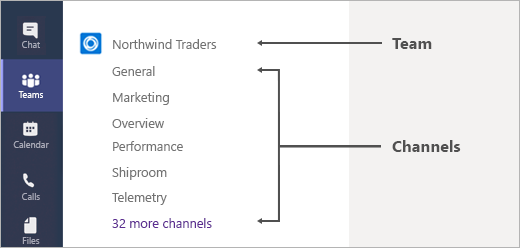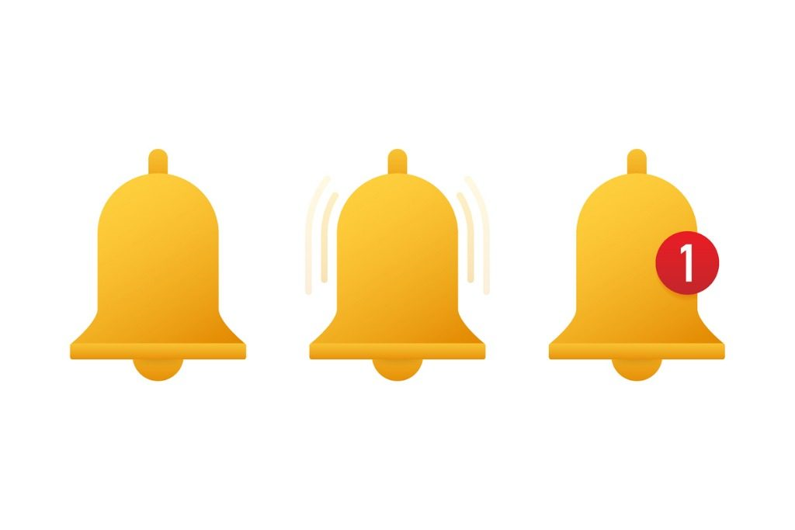Looking for ways to keep your Teams data safe? Watch our webinar “Securing Microsoft Teams: 4 Tactics For Regulated Organizations” for powerful insights.
We are seeing many customers who have turned to Microsoft Teams to meet remote work needs. But turning it on does not equate to successful adoption. Achieving high monthly active usage does not mean effective usage. It could hint towards it, but do not be disillusioned in thinking the job is done. Managing change is a role and an ongoing responsibility. It takes commitment to maintain the conditions for meaningful adoption.
Covid-19 drove our Microsoft Teams deployment, but it has not necessarily brought meaningful adoption.
Many organisations have rushed into using Microsoft Teams, mostly driven by the need to provide remote work capability for COVID-19. A Skype-to-Teams project may have been on the roadmap already, and it was hurried along. The attraction to Teams has been that it provides a way for business units to keep in contact and, to some degree, continue to work. Chat, video calls, and online meetings are available out of the box, even if equipment like webcams have been in short supply (and still are in some markets.)

Using Microsoft Teams Chat is easy to learn for most new users. It’s a chat application and the conversation format is familiar enough; find a person, start or continue a conversation, and invite others to join.
Microsoft Teams meetings need a little more explaining. If you want to schedule a meeting, the Teams Meetings app requires your email to be in Microsoft 365 / Exchange Online. When the meeting is running, the usual functions are all there such as presenting content, sharing your desktop, and chatting within the meeting.
However, some things are not so intuitive, such as:
- Finding and chatting with external contacts needs your organisation to have federation configured. That is outside the control of end-users but is still confusing to them when they have been left to find that out for themselves.
- If your organisation used Skype for Business, you had grown accustomed to a well-integrated experience with Outlook for contact management. But let’s just say that contact management is a weak point that Microsoft Teams still needs to work on at the time of writing this article.
The greatest challenge comes with creating a Team and then encouraging conversation and teamwork to shift into it. Some skills and functions are not intuitive, and some of these changes require a change in team and organisational culture. That’s difficult to do under all kinds of COVID-related pressures, especially remote from your team members. The collaborative side of Microsoft Teams needs attention and change management under the best of conditions. Under COVID-19 conditions, misuse of Teams and bad habits have been magnified. Common issues include:
- Team members creating a new Team when one already exists. Some teams now have more than one Team to belong to just to engage in everyday business. Managers need to keep in contact with their team members to prevent this.
- Work conversations being lost in unstructured group chats. The lack of threading can make it difficult to know who a reply was directed towards.
- Teams being hurriedly deployed and over-engineered with too many channels. This presents too many choices for team members for where to start a conversation or upload and create documents.
![]()
I mentioned earlier that Chat was reasonably intuitive and familiar. But when it comes to conversations with Teams and channels, some of your team members may still struggle. We had users who:
- Didn’t leverage @mentions to address individuals or the team in posts
- Didn’t know to use subjects to make a conversation easier to find.
- Kept conversations in a thread using reply. This has since been remedied by the introduction of the “New Conversation” button. It hides the text box for composing the new conversation so it’s not confused with the Reply box at the bottom of a conversation thread.
- Overused the General channel for everything.
- Didn’t “show” channels to ensure new messages were seen and channel notifications were received.
This article might feel quite negative so far, but despite some confusion and bad habits, we have taught ourselves how to use Microsoft Teams and made it work for us under trying conditions. But don’t stop at this point and hope that your organisation will organically grow to use Microsoft Teams effectively without a bit of help!
There is a big difference between usage and adoption of Microsoft Teams. You can remove all the phones off desks and replace Skype with Teams for Chat and Monthly Active Usage (MAU) figures will increase because Teams is the only option to make a call. But MAU figures will not tell you how employees are using features within Teams. Active usage figures will not reveal whether Teams usage is helping to achieve the goals for your team and your organisation. You want to be more interested in encouraging Meaningful Active Usage rather than driving Monthly Active Usage.

Working remotely has its benefits. But you must be intentional in your efforts to maintain a connection with your team. Now is the time to prioritise adoption and change efforts that lower barriers to connecting and collaborating. Adoption and change campaigns are needed to course-correct remote work culture, reduce stress, and improve employee engagement.
Here are 8 things you can do to help encourage Meaningful Active Usage in Microsoft Teams.
1. Use @mentions to help your teammates keep on top of conversations in Teams.
Take a close look at how different teams communicate. Have team members grasped the basics? Are they using a subject when starting a conversation, or mentioning the people they wish to communicate with? These skills might appear to be simple, but they are essential for helping others use the Activity Feed effectively. Using @mentions in a message causes the message to appear in the Activity Feed for the person, tag group, channel or Team mentioned. Then one can scroll through the messages mentioning them from one location in the Teams app. This reduces the effort to catch up with messages they have missed.
2. Talk with those actively and loudly resisting using Microsoft Teams
For some team members, COVID-19 conditions are not the best time to learn how to use new tools to do their job. Unfamiliarity and pressure will send your best team members back to the way they have always done things because it’s comfortable. Get on a call with those who are vocal about their troubles with Microsoft Teams and listen to them.

When they describe their problem in the context of their work, you’ll get a better understanding of what is troubling them about using Teams. Sometimes it’s a misunderstanding of a Teams feature, and after listening you can step through how to use the feature the right way now that you understand their context.
Identify the common stressors and complaints people have about using Teams. This will help focus your efforts on sharing relevant skills and clarifying why and how to use features of Teams.
3. Coach Team owners to simplify their Teams and reduce stress
Team owners are usually self-taught. They have created a Team to discover what it can do and how it might aide collaboration for a project, a workgroup, a community. As they see the potential for Teams to help, they can over-engineer the Team and create too many channels. Or at the other end of the scale, they do not create any channels and the Team works out of the General channel.
Work with Team owners. Ask them what works well and does not work well in their existing Teams to quickly find out where to focus your coaching efforts.
Coach them on how to use channels effectively. Help Team owners identify the workstreams in their Team and guide them to create channels that support workstreams. This will provide favourable conditions for adoption because it reflects how a team would work in the physical world on a project.

Give Team owners a shortlist of activities they can run with their team members to get their input into building the Team and using it’s features around real work processes. Identify scenarios and work processes that are meaningful to them. Build the Team around those. This should be an on-going conversation with team members to tweak and change their Team as they work. When you involve your team in the Teams-building process, they form a sense of ownership, they feel listened to, and they want to use the thing they built together.
4. Improve employee engagement within Microsoft Teams
Encourage leaders to hold more conversations openly in their Teams, shifting them out of email. If they need to get input on an idea or activity, suggest they post it in their Team.
Take a varied approach to employee engagement. Do not stop at a company-wide email and an Intranet article. Use Teams Live Events with Q&A. Capture unanswered questions from the Live Event and answer them in an org-wide Team, inviting dialogue when you do so.
If you have a large organisation, you might also consider using Yammer for the post-Live Event responses, where the conversations can scale to 10’s of thousands. Today, we need our leadership to do more than broadcast in one direction to the many. It’s also important for leadership to make time to join a few conversations. Doing so openly in org-wide Teams or Yammer is a good, scalable start.

5. Promote collaborative team culture with Adoption campaigns
Create Adoption and Change campaigns that address team culture alongside common scenarios. If you are trying to build a collaborative team culture, try these suggested campaigns:
- Managing and discussing files – Show team members and owners how to upload and organise files in Teams. But also show them how to discuss files, attach a link to a file, or open the conversation window while working on a file. Conversation often enriches content.
- Team task management – Model a few ways to manage tasks in Microsoft Teams. Show how Planner can be opened, shared on screen, and used to facilitate a project meeting while staying on-task.
- Taking shared notes – Show a team how to include a link to meeting notes in the meeting invite. Use the OneNote team notebook to keep meeting notes together and accessible for all team members. Ask people to open the meeting notes page during the meeting and take notes together.
6. Promote personal productivity habits for individuals in Microsoft Teams
If your organisation has simply turned on Teams, individuals have had to figure it out for themselves. They tend to miss some of the simple skills that can improve their personal experience in Teams and help them use it more productively.

For example, very few organisations show people how to manage their Teams notifications. As the usage of Teams increases and an individual becomes a member of more Teams, the notification noise can be deafening. Run a campaign on things you can do to manage the noise and stress from Teams notifications. Campaign ideas include:
- Ideal notification default settings for different roles in your organisation
- How to use the Activity feed to catch up with messages
- Planning your availability for periods of uninterrupted focus time
- Using the Tasks app to plan your work. Choose tasks from priority projects and schedule them during your focus time.
7. Using OneDrive and Microsoft Teams together
Personal file management in Teams might not be clear. There are a few places where you can upload attachments to a conversation. When the conversation is in the Teams Chat app, files shared or uploaded to a conversation are stored in OneDrive. Meanwhile, files uploaded to a conversation in a Teams channel are stored in SharePoint and shared with team members. When should a document be shared with team members, or published on the Intranet? Run an Adoption campaign to show how to use OneDrive with Teams.
- Show the areas of Teams where you can access and share your OneDrive files.
- Moving files between your OneDrive to the Team is a good skill to promote. It’s important to document collaboration and a publishing life cycle. Show how to sync a folder from a Microsoft Team with OneDrive on your device.

8. Use community to make people aware of changes to Microsoft Teams and share relatable stories
The Microsoft Teams application is updated frequently. Some changes are announced in the Microsoft 365 Message Center before they’re rolled out. Other changes just appear in the application. Microsoft choose which changes are impactful enough to announce. But even when they do, regular people using Microsoft Teams are rarely looking in the places where changes are communicated.
Change Management for Microsoft Teams needs to be addressed on two fronts:
- IT needs to check periodically for coming changes, assess the impact for their organisation and communicate the changes.
- Address how to deal with change in the Microsoft Teams product itself.
- Create an internal community to discuss the use of Microsoft Teams. The community will share when they see something new and start a conversation. Who else is seeing this change? Have you tried it? What did you think? How are you using this new or changed feature? How would you use it? What are the positives and negatives of this change?
- Make announcements in the community about coming features. But make sure you include user guidance and tips for how to use it within your organisation’s processes and culture.
- Capture and publish stories about how different groups are using Microsoft Teams. Return to those stories and share follow-ups, so people have examples to follow.
It’s still early days as we help our customers get back on track and reshape Teams and an info architecture around real work processes. The challenges I have discussed are present with or without COVID-19 conditions. However, it has been frequently said that COVID-19 has accelerated years of planning to provide remote working options. So make sure that after a rapid deployment of Microsoft Teams, you circle back and check that people are using it the right way to improve their workday.

